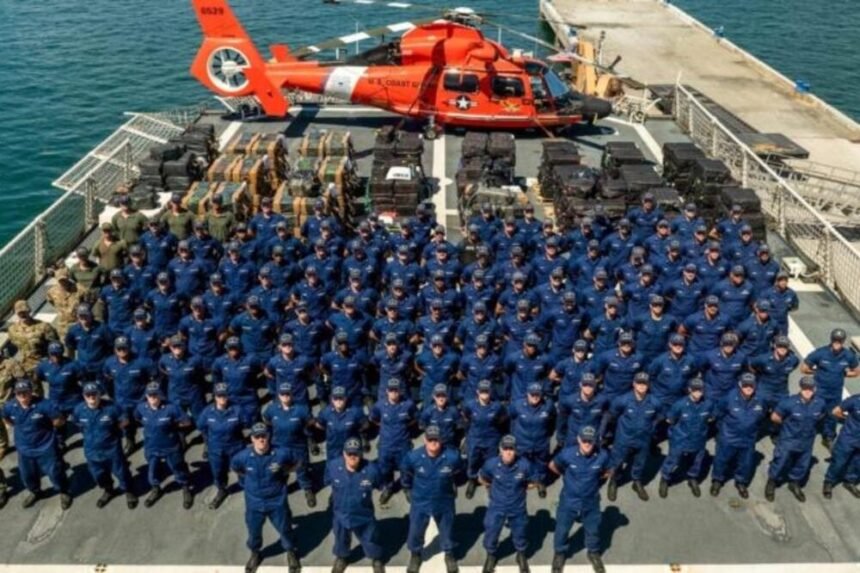The U.S. Coast Guard has seized over 20 tons of cocaine worth $517.5 million in a series of operations across the eastern Pacific Ocean. The massive drug haul was offloaded at Port Everglades, Florida, with 35 suspected traffickers handed over to U.S. authorities.
According to the Coast Guard, these successful operations resulted from 14 vessel interceptions in international waters between December and March. The largest single seizure occurred on December 22, when U.S. forces confiscated 5.54 tons of cocaine from a high-speed boat southeast of the Galápagos Islands.
Captain Jonathan Carter, commander of the USCGC Stone, praised his crew’s efficiency in combatting drug smuggling:
“You’ve heard that the Coast Guard’s national security cutters are crucial in fighting drug trafficking, but they still need brave men and women willing to serve at sea and face danger,” Carter stated.
He highlighted a particularly intense operation where the crew intercepted four fast-moving vessels in just 15 minutes, seizing nearly five tons of cocaine. “This is drugs that will never be mixed with deadly fentanyl and will never threaten American lives,” he added.
International Operation Against Drug Cartels
The Coast Guard carried out multiple interceptions over the past three months. On December 21, the Stone crew seized 740 kilograms of cocaine about 517 kilometers west of Ecuador. The next day, they intercepted a low-profile vessel carrying 5.54 tons of cocaine near the Galápagos.
Further operations followed, including:
- January 9: A high-speed boat carrying 1.07 tons of cocaine was intercepted west of Salinas, Ecuador.
- January 28: A drone detected a vessel south of Mexico, leading to the seizure of 1.76 tons of cocaine.
- February 19: In a large-scale operation near the Galápagos, four fast boats carrying five tons of cocaine were stopped.
The operations involved Coast Guard cutters Stone and Mohawk, specialized helicopter and drone units, as well as multiple U.S. and international agencies.
Commander David Ratner of the Mohawk emphasized that the fight against drug trafficking starts far from U.S. shores:
“Our efforts to protect Americans begin by denying traffickers access to maritime routes and disrupting their activities far out at sea,” Ratner explained. He also noted close cooperation with regional partners like Costa Rica.
A $500 Million Blow to Drug Cartels
The seized drugs have been linked to Mexico’s Sinaloa and Jalisco New Generation Cartels, which the U.S. government recently designated as foreign terrorist organizations. The loss of such a large shipment represents a significant financial setback for these criminal networks, which are also involved in fentanyl production.
The U.S. Coast Guard has vowed to continue its intensified operations against narco-cartels, working with international partners and intelligence agencies. Officials stress that successful drug interceptions at sea require extensive interagency and global coordination.
The Joint Interagency Task Force-South, based in Key West, Florida, is responsible for detecting and tracking illegal air and maritime drug shipments. Once a vessel is identified for interdiction, enforcement falls under the U.S. Coast Guard’s jurisdiction, specifically its Eleventh District, headquartered in Alameda, California.







